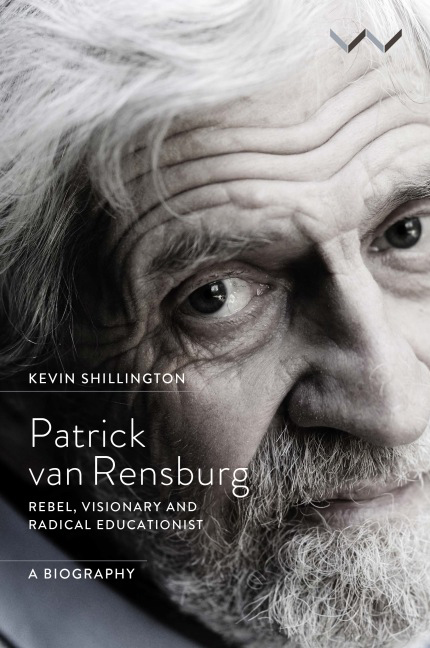Book contents
- Frontmatter
- Dedication
- Contents
- Acknowledgements
- Abbreviations and Acronyms
- List of Illustrations
- Maps
- Introduction
- 1 Origins and Identity in South Africa
- 2 An Anglophone South African, 1936–1948
- 3 The Making of an Afrikaner, 1949–1953
- 4 Diplomat and Rebel, 1953–1957
- 5 Anti-Apartheid Activist, 1957–1959
- 6 Boycott, 1959–1960
- 7 Into Exile, 1960–1961
- 8 Return to Africa, 1961–1962
- 9 The Founding of Swaneng Hill School, 1962–1963
- 10 Challenging ‘The Ladder to Privilege’, 1963–1965
- 11 The Alternative Educationist, 1965–1967
- 12 Expansion and Replication, 1967–1969
- 13 Time of Crisis, 1969–1971
- 14 Education with Production, the 1970s
- 15 Foundation for Education with Production and Spreading the Word, the 1980s
- 16 Education with Production and South Africa, the 1990s
- 17 Return to Botswana
- Epilogue
- Notes
- Bibliography
- Index
15 - Foundation for Education with Production and Spreading the Word, the 1980s
Published online by Cambridge University Press: 10 September 2020
- Frontmatter
- Dedication
- Contents
- Acknowledgements
- Abbreviations and Acronyms
- List of Illustrations
- Maps
- Introduction
- 1 Origins and Identity in South Africa
- 2 An Anglophone South African, 1936–1948
- 3 The Making of an Afrikaner, 1949–1953
- 4 Diplomat and Rebel, 1953–1957
- 5 Anti-Apartheid Activist, 1957–1959
- 6 Boycott, 1959–1960
- 7 Into Exile, 1960–1961
- 8 Return to Africa, 1961–1962
- 9 The Founding of Swaneng Hill School, 1962–1963
- 10 Challenging ‘The Ladder to Privilege’, 1963–1965
- 11 The Alternative Educationist, 1965–1967
- 12 Expansion and Replication, 1967–1969
- 13 Time of Crisis, 1969–1971
- 14 Education with Production, the 1970s
- 15 Foundation for Education with Production and Spreading the Word, the 1980s
- 16 Education with Production and South Africa, the 1990s
- 17 Return to Botswana
- Epilogue
- Notes
- Bibliography
- Index
Summary
Revolution was in the air in 1979 – not just in Iran, Grenada and Nicaragua, but in Africa too, with the overthrow of several brutal dictatorships. Patrick sensed it in Southern Africa. It was clear that in neighbouring Zimbabwe the Smith regime's ‘internal settlement’ could not hold out much longer. And, viewed from Botswana, it was even possible to believe that South Africa itself was about to enter the final decade of its road to liberation.
The time was right for Patrick to throw his full weight into the struggle. He believed that his model of EwP was the way to ensure that when both Zimbabwe and South Africa were liberated the old colonial and contemporary capitalist models of education for exploitation could be swept aside. With his help they would be replaced by a socialist vision of education that would transform society to the benefit of the masses.
Influenced by the Marxist analysis of his Serowe study groups, Patrick now saw the challenge ahead in terms of class struggle and the beneficiaries of the capitalist model of education as the ‘black petty bourgeoisie’ rather than the vaguer term ‘élite’. It was they, in Botswana and Zimbabwe (and ultimately in South Africa), who were putting barriers in the way of his alternative model of education.
He saw the opportunity to start the fight back against those forces with the dramatic outflow from South Africa of child refugees following the Soweto uprising of 1976. Many passed through Botswana on their way to Zambia and ultimately Tanzania, where they became the responsibility of the ANC leadership. Most of these refugees had been politicised by the Black Consciousness movement and regarded the ANC as old-fashioned. Once they reached exile, however, they found the ANC was the only organisation able and prepared to take them on, offer them training and educate them politically.
Patrick had worked with the ANC since his early Swaneng days and may even have secretly helped his friend and colleague Lawrence Notha to transfer refugees northwards. He supported most of the ANC's policies and, over the years, employed a considerable number of South Africans, many of whom he knew were secretly members of the ANC.
- Type
- Chapter
- Information
- Patrick van RensburgRebel, Visionary and Radical Educationist, a Biography, pp. 245 - 266Publisher: Wits University PressPrint publication year: 2020



